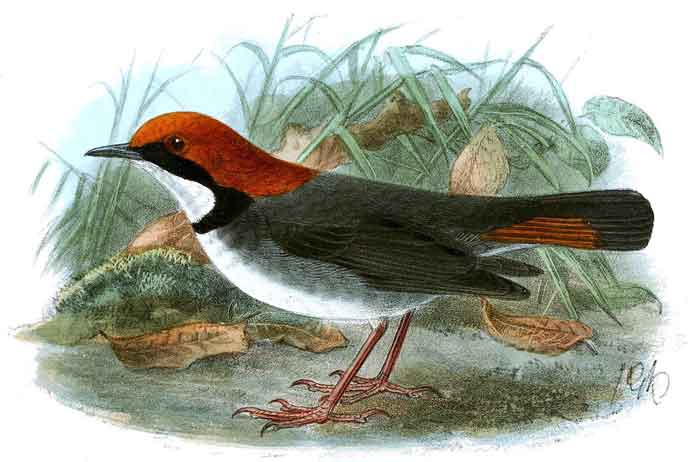
Superregnum: Eukaryota
Cladus: Unikonta
Cladus: Opisthokonta
Cladus: Holozoa
Regnum: Animalia
Subregnum: Eumetazoa
Cladus: Bilateria
Cladus: Nephrozoa
Superphylum: Deuterostomia
Phylum: Chordata
Subphylum: Vertebrata
Infraphylum: Gnathostomata
Megaclassis: Osteichthyes
Cladus: Sarcopterygii
Cladus: Rhipidistia
Cladus: Tetrapodomorpha
Cladus: Eotetrapodiformes
Cladus: Elpistostegalia
Superclassis: Tetrapoda
Cladus: Reptiliomorpha
Cladus: Amniota
Classis: Reptilia
Cladus: Eureptilia
Cladus: Romeriida
Subclassis: Diapsida
Cladus: Sauria
Infraclassis: Archosauromorpha
Cladus: Crurotarsi
Divisio: Archosauria
Cladus: Avemetatarsalia
Cladus: Ornithodira
Subtaxon: Dinosauromorpha
Cladus: Dinosauriformes
Cladus: Dracohors
Cladus: Dinosauria
Cladus: Saurischia
Cladus: Eusaurischia
Subordo: Theropoda
Cladus: Neotheropoda
Cladus: Averostra
Cladus: Tetanurae
Cladus: Avetheropoda
Cladus: Coelurosauria
Cladus: Tyrannoraptora
Cladus: Maniraptoromorpha
Cladus: Maniraptoriformes
Cladus: Maniraptora
Cladus: Pennaraptora
Cladus: Paraves
Cladus: Eumaniraptora
Cladus: Avialae
Infraclassis: Aves
Cladus: Avebrevicauda
Cladus: Pygostylia
Cladus: Ornithothoraces
Cladus: Ornithuromorpha
Cladus: Carinatae
Parvclassis: Neornithes
Cohors: Neognathae
Cladus: Neoaves
Cladus: Telluraves
Cladus: Australaves
Ordo: Passeriformes
Subordo: Passeri
Infraordo: Passerida
Superfamilia: Muscicapoidea
Familia: Muscicapidae
Genus: Larvivora
Species: Larvivora ruficeps
Name
Larvivora ruficeps (Hartert, 1907)
Synonyms
Erithacus ruficeps
Luscinia ruficeps
References
Bulletin of the British Ornithologists' Club 19: p.50 BHL.
IUCN: Larvivora ruficeps (Endangered)
Vernacular names
Deutsch: Rotkopfnachtigall
English: Rufous-headed Robin
Esperanto: Ruĝkapa najtingalo
فارسی: مگسخوار سرخرمایی
magyar: Vörösfejű vörösbegy
кырык мары: Якшар вуян шӹжвӹк
Nederlands: Roodkopnachtegaal
svenska: rosthättad näktergal
中文: 棕头歌鸲
The rufous-headed robin (Larvivora ruficeps) is a species of passerine bird in the family Muscicapidae. It is found in central China. Its natural habitats are temperate forests and temperate shrubland. This poorly known species is thought to be threatened by habitat loss.
Taxonomy
The rufous-headed robin was previously placed in the genus Luscinia. A molecular phylogenetic study published in 2010 found that Luscinia was not monophyletic. The genus was therefore split and several species including rufous-headed robin were moved to the reinstated genus Larvivora.[2][3]
Within the genus Larvivora the rufous-headed robin is genetically most closely related to the rufous-tailed robin (Larvivora sibilans). These two species form a sister group to a clade comprising the Japanese robin (Larvivora akahige) and the Ryukyu robin (Larvivora komadori).[4]
Description
This is a small robin (average length 15 cm) with orange-rufous head, a black face, and a white throat with black bordering. Back, upper breast and flanks are grey, most of the belly and underparts are white. The tail is black with rufous fringes and blackish tips to outer feathers.[1] The song is powerful and clearly phrased,[1] and most similar to that of the Ryukyu robin.[4]
Distribution and habitat
The species has been recorded from only seven confirmed or probable breeding sites in the Qin Mountains of Sichuan and southern Shaanxi, and is also known from a very few scattered migrant records. While good population estimates are absent, it is assumed to have a very localized distribution and small total population size of no more than 1,500-3,800 individuals.[1]
It inhabits mixed coniferous and deciduous forest and scrubland in a very narrow altitude band (2,400-2,800 m above sea level), apparently making use of successional scrub in valley bottom areas subject to flash-floods.[1]
Using known breeding records of the rufous-headed robin, ecological niche modeling predicts that there should be suitable habitats for this species in north and central Sichuan, south Gansu, south Shaanxi and south-east Tibet.[4]
Conservation
Populations of the rufous-headed robin appear to be on the decline. The species was classified by the IUCN as Vulnerable until 2012 and was uplisted to Endangered in 2013, based on the rarity of recent sightings, which is taken to indicate an ongoing population decline. The main threats are believed to be habitat loss and degradation, likely exacerbated to an unknown degree by capture of live specimens for the caged bird trade.[1]
References
BirdLife International (2017). "Larvivora ruficeps". IUCN Red List of Threatened Species. 2017: e.T22709711A110040250. doi:10.2305/IUCN.UK.2017-1.RLTS.T22709711A110040250.en. Retrieved 12 November 2021.
Sangster, G.; Alström, P.; Forsmark, E.; Olsson, U. (2010). "Multi-locus phylogenetic analysis of Old World chats and flycatchers reveals extensive paraphyly at family, subfamily and genus level (Aves: Muscicapidae)". Molecular Phylogenetics and Evolution. 57 (1): 380–392. doi:10.1016/j.ympev.2010.07.008. PMID 20656044.
Gill, Frank; Donsker, David, eds. (2016). "Chats, Old World flycatchers". World Bird List Version 6.2. International Ornithologists' Union. Retrieved 20 May 2016.
Zhao, M.; Alström, P.; Hu, R.; Zhao, C.; Hao, Y.; Lei, F.; Qu, Y. (2017). "Phylogenetic relationships, song and distribution of the endangered Rufous-headed Robin Larvivora ruficeps". Ibis. 159: 204–216. doi:10.1111/ibi.12426.
Retrieved from "http://en.wikipedia.org/"
All text is available under the terms of the GNU Free Documentation License

